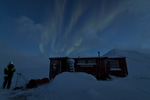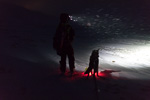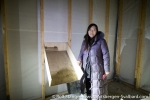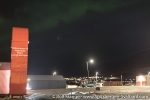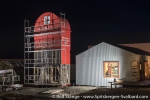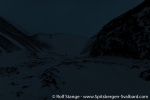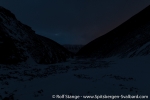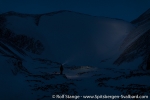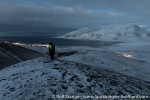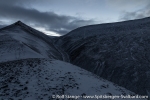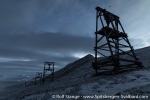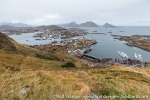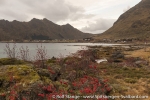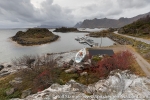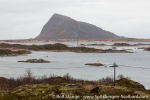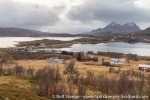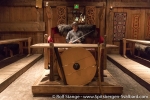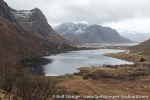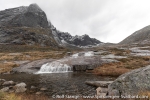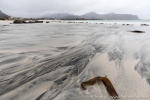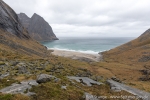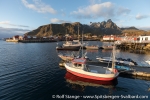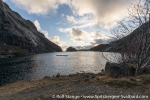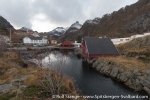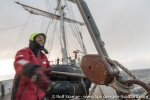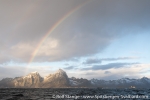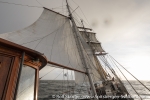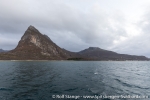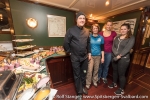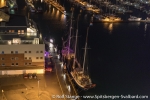-
current
recommendations- Liefdefjord
New page dedicated to one of Spitsbergen's most beautiful fjords. Background information and many photos.
- New Spitsbergen guidebook
The new edition of my Spitsbergen guidebook is out and available now!
- Liefdefjord
New page dedicated to one of Spitsbergen's most beautiful fjords. Background information and many photos.
Page Structure
-
Spitsbergen-News
- Select Month
- May 2025
- April 2025
- March 2025
- February 2025
- January 2025
- December 2024
- November 2024
- October 2024
- September 2024
- August 2024
- July 2024
- June 2024
- May 2024
- April 2024
- March 2024
- February 2024
- January 2024
- December 2023
- November 2023
- October 2023
- September 2023
- August 2023
- July 2023
- June 2023
- May 2023
- April 2023
- March 2023
- February 2023
- January 2023
- December 2022
- November 2022
- October 2022
- September 2022
- August 2022
- July 2022
- June 2022
- May 2022
- April 2022
- March 2022
- February 2022
- January 2022
- December 2021
- November 2021
- October 2021
- September 2021
- August 2021
- July 2021
- June 2021
- May 2021
- April 2021
- March 2021
- February 2021
- January 2021
- December 2020
- November 2020
- October 2020
- September 2020
- August 2020
- July 2020
- June 2020
- May 2020
- April 2020
- March 2020
- February 2020
- January 2020
- December 2019
- November 2019
- October 2019
- September 2019
- August 2019
- July 2019
- June 2019
- May 2019
- April 2019
- March 2019
- February 2019
- January 2019
- December 2018
- November 2018
- October 2018
- September 2018
- August 2018
- July 2018
- June 2018
- May 2018
- April 2018
- March 2018
- February 2018
- January 2018
- December 2017
- November 2017
- October 2017
- September 2017
- August 2017
- July 2017
- June 2017
- May 2017
- April 2017
- March 2017
- February 2017
- January 2017
- December 2016
- November 2016
- October 2016
- September 2016
- August 2016
- July 2016
- June 2016
- May 2016
- April 2016
- March 2016
- February 2016
- January 2016
- December 2015
- November 2015
- October 2015
- September 2015
- August 2015
- July 2015
- June 2015
- May 2015
- April 2015
- March 2015
- February 2015
- January 2015
- December 2014
- November 2014
- October 2014
- September 2014
- August 2014
- July 2014
- June 2014
- May 2014
- April 2014
- March 2014
- February 2014
- January 2014
- December 2013
- November 2013
- October 2013
- September 2013
- August 2013
- July 2013
- June 2013
- May 2013
- April 2013
- March 2013
- February 2013
- January 2013
- December 2012
- November 2012
- October 2012
- September 2012
- August 2012
- July 2012
- June 2012
- May 2012
- April 2012
- March 2012
- February 2012
- January 2012
- December 2011
- November 2011
- October 2011
- September 2011
- August 2011
- May 2011
- April 2011
- March 2011
- February 2011
- January 2011
- December 2010
- November 2010
- September 2010
- August 2010
- July 2010
- June 2010
- May 2010
- April 2010
- March 2010
- February 2010
- November 2009
- October 2009
- August 2009
- July 2009
- June 2009
- May 2009
- April 2009
- March 2009
- February 2009
- January 2009
- December 2008
- November 2008
- October 2008
- August 2008
- July 2008
- June 2008
- May 2008
- April 2008
- March 2008
- February 2008
- April 2000
- Select Month
-
weather information
-
Newsletter

| Guidebook: Spitsbergen-Svalbard |
Home →
Yearly Archives: 2017 − News & Stories
2017: my year in review – February and March: the Antarctic Odyssey
After finishing the big project with my new Norwegian guidebook Svalbard – Norge nærmest Nordpolen, it was time to get some fresh air. And I got lots of it during a trip around the world in February in March. The heart of this huge voyage was a semi-circumnavigation of Antarctica, which I refer to as the “Antarctic Odyssey”. Starting in New Zealand, we went to Campbell Island, into the Ross Sea and then via Peter I Island to the Antarctic Peninsula before we finished in Ushuaia. Truly an Odyssey!
The highlight of this great journey? Hard to say. There was not only one highlight. Just the dimensions of this trip are epic, many thousand nautical miles in more than 30 days. Being Expedition Leader on such a trip on the Ortelius was certainly a contribution towards making it interesting for me. Normally, “my” ships are much smaller these days, and they do not carry 3 helicopters!
Thinking about which impression still means a lot to me and will stay for a long time, then Campbell Island is quickly coming to my mind. This island, which belongs to the New Zealand subantarctic islands, was very high on my personal wishlist – simply as I had not been there before. Well, I had been very close 2 years earlier, but then, there was no chance of making a landing because of very strong winds. This time, we had just the portion of luck that you need in a place like that.

Albatrosses on Campbell Island.
Of course, flying into Taylor Valley, one of the famous McMurdo Dry Valleys, and to McMurdo Base, where we almost stayed quite a bit longer than we actually wanted to, are experiences never to be forgotten. And that is generally true for all impressions of Antarctica from a bird’s perspective.

Waterboat Point (Antarctic Peninsula) from the air.
But in the end, it is the direct encounters with the wildlife and the scenery that is always getting very close to my heart and soul. That is what stays! The Albatrosses on Campbell Island, the Emperor penguins in the Ross Sea, the Humpback whales and penguins in the Antarctic peninsula, to mention a few of these encounters. Memories that will stay forever!

Emperor and Adelie penguin at Cape Hallet in the Ross Sea.
2017: my year in review
It is almost frightening how time is flying. Again, a year almost gone! It was an intense, rich year. What did the last 12 months bring, for Spitsbergen, for spitsbergen-svalbard.com and for me? I’ll review the year with a couple of blogs over the next days.
January is polar night in the far north. A good time for writing table adventures. Writing arctic books is not boring, but the actual process is often not terribly exciting. In practice, it means to spend an awful lot of time on the computer. Researching, writing, editing, looking for images, processing images, making illustrations and so on and so forth.
In January 2017, my biggest project in many years was about to be finished. I can tell you that it was not boring! For a long time already, I had had dreams of a Norwegian translation of my Spitsbergen guidebook. And in 2015, I was brave or crazy enough to go ahead with it. Intense work on every opportunity for a good year, involving a number of native speakers who helped me in translating and “språkvask” (proofreading language). I am still almost feeling dizzy when I bring these weeks and months, which were very intense, back to my inner eye. I don’t want to bother you with the details of the process, but it was without exaggeration certainly my biggest project since the very first version of the Spitsbergen guidebook came out in 2007 (that was the first German edition, that very heavy book, if anyone remembers). And at the same time, I had a little series of presentations, while public attention in Longyearbyen was turned on a polar bear family who had settled down for a while in the neighbourhood of town. A polar bear family, mother with 2 cubs, even walked through way 238 (the neighbourhood close to Adventdalen, lowermost road – that’s where we also have our little home).
And I did manage to finalize the files with the Norwegian book for printing before I went down to Antarctic in February. Halleluja!

My arctic adventure in early 2017: Svalbard – Norge nærmest Nordpolen.
More evacuations on the anniversary of the 2015 avalanche in Longyearbyen
Update (21 December): The weather has calmed down again and after checking relevant avalanche-prone slopes, the authorities have decided to lift the traffic ban that was implemented on Monday.
The evacuations from last week, concerning the upper row of houses in Lia, remains in force until further notice (end of update).
It seems almost strange: exactly 2 years after the fatal avalanche in Longyearbyen, the weather forecast for today (19 December) seems almost exactly the same as it was just before snow masses killed two people in their homes on 19 December, 2015. Winds up to 20 m/s from southeasterly directions and strong precipitation are expected during the evening.
For tonight, a commemoration ceremony was scheduled for the victims of the fatal 2015 avalanche. But it seems as if many people’s attention will rather be demanded by today’s situation and events. Some days ago, the Sysselmannen had already issued an order to evacuate parts of Longyearbyen. This was to be in force on 22 December and based on the general avalanche risk, rather than the actual weather and avalanche situation. After new weather forecasts were released, this measure came into force already yesterday (18 December) at 22 p.m.
At the same time, the evacuation zone was extended to include more houses in Lia, the part of Longyearbyen that was hit in 2015 (“Spisshusene”, the coloured wooden houses between the centre and the mountain Sukkertoppen) and parts of Nybyen (all houses on the east side of the road).
The evacuations are in force until further notice. Some addresses may not be accessible for months.

Large parts of Nybyen and Lia in Longyearbyen are now evacuated because of the current and general avalanche risk.
Houses in Longyearbyen evacuated: residual risk of avalanches too high despite local warning system
Soon it will be two years ago that the avalanche came down from the mountain Sukkertoppen that destroyed eleven houses and took two lives. There will be a memorial ceremony in Longyearbyen on the day, 19 December.
The avalanche area in Longyearbyen in December 2015. Two people were killed and eleven houses destroyed. One was moved as much as 80 metres. Photo © Svalbardposten.
There has been – and still is – a lot of talking about the avalanche risk in Longyearbyen on all levels. It seems obvious that there have been neglects on various public levels, but it was said officially that there is no institution or individual that may legally be held responsible.
And there is, of course, the question of how to deal with the avalanche risk in future. An official report about the avalanche situation has determined that a large number of houses in Longyearbyen is exposed to various levels of avalanche risk. A local warning system has been established, which has produced mixed results so far; on one occasion, the system produced a false security statement that was spectacularly wrong. Two houses were destroyed on that occasion, and it was a matter of luck that there was no loss of human life. Instruments to measure the thickness of the snow layer have been installed on various slopes close to Longyearbyen. These instruments are supposed to provide real-time data about snow accumulation in locations where people had to measure manually in the past, something that is often difficult or even impossible in situations of severe weather when an increased risk has to be assumed. But that is obviously exactly when you need that kind of data, so these new decives are expect to make a significant improvement to the avalanche warning system.
Avalanche barriers are another measure expected in the future, but they are not there yet, almost two years after the big, tragic 2015 event. Evacuating parts of Longyearbyen, on a situative or permanent basis, is also one of the options which are discussed. The financial aspects of all that is yet another issue.
It does, however, not cost the public much to evacuate certain addresses on a preventive basis. Evacuating parts of Longyearbyen has become a standard procedure during winters since late 2015. Yesterday (14 December), the Sysselmannen has issued an order that certain addresses have to be left until 22 December until further notice. This measure is expected to be in force until the snow is gone, which means, the houses will not be available for months.

These parts of Longyearbyen (marked red) will be evacuated from 22 December until further notice. The complete map is available from the Sysselmannen.
So far, evacuations were made in or before an actual risk situation, based on snow conditions, weather forecasts etc. This time, however, there is no such base for the evacuation, something that becomes clear from the time span of 8 days between the issue of the evacuation order and the date (22 Dec) when it actually enters force. Sysselmannen Kjerstin Askholt says “The ban on traffic is based on the risk evaluation for individuals and public safety, because this area is especially exposed to avalanches. The current practice with a local avalanche warning system and possible evacuations, based on technical advice from avalanche experts, does not exclude a high residual risk and remaining uncertainties, so the houses in question can not be used while there are no measures for avalanche safety in place” (Sysselmannen, auhtor’s translation).
Areas concerned are addresses in way 222 and 226, which are located directly next to the mountain Sukkertoppen, but may be extended to other areas at any time as deemed necessary by authorities.
Evacuating a number of houses for a longer period of time based on general precautionary reasons rather than an actual risk situation appears to be a drastic step, compared to the impact that this has on the lives of those who have to leave their homes for months. There are those who have, next to their home in the area concerned, rented a place elsewhere in Longyearbyen on a permanent basis, something that obviously involves high costs and this is not a contribution to the already difficult housing market in Longyearbyen either. Those who own a place in the area that is affected, are also faced with a substantially difficult situation.
Not a glorious chapter for politics, considering the current development started with the avalance in December 2015 – two years ago.
Source: Sysselmannen
The hut in Foxdalen – 21st November 2017
Tue
21 Nov
2017
As mentioned before, November is not exactly the time for long trips out in the arctic wilderness. But that does not mean that you can’t go out on tour. Even a few kilometres can be interesting and even challenging in darkness, wind and drifting snow. Under clouds and snowfall, darkness is darkness is darkness. As long as you have got the wind in your face from the left side, the direction will be roughly ok. Fintuning is done later with help of the GPS. How did Nøis, Ritscher and all these guys do it in the old days? No idea. Well, they were not wimps as we are today. The just went for it and kept searching for the hut for some hours, if necessary. And if they did not find it at all, they were son food for the foxes. Good these days are over! It is still challening enough. The heavy pulk is pulling behind me, a strong sledge dog is pulling in front of me and under me, the skis are gliding over young snow.
- gallery anchor link: #gallery_1365
Click on thumbnail to open an enlarged version of the specific photo.
Finally, we have reached the hut in Foxdalen. Just in time, the sky is clearing up and the courtain is lifting for a northern light of the more impressive sort, to put it mildly. I did not have the camera ready to capture the most amazing moment, sometimes there are more important things to do. But we did enjoy it, not just a little bit! And soon, the fire was going in the ovn …
Santa Claus’ Letterbox – 20th November 2017
If you have been to Longyearbyen since December 2013, then you have seen the huge, red letterbox just upon entering town, as you came from the airport. This was the Santa Claus Mailbox, and here you could post your letters to Santa Claus.
The letterbox was an idea from Po Lin Lee from Honkong, but she did not just send an idea and money from far away. She was and is in Longyearbyen and puts a lot of effort into hear postal project. But – the permission to have it standing there was only temporary. It ran out on December 2015, and then, the letterbox was to be removed again, or a new permission had to be obtained.
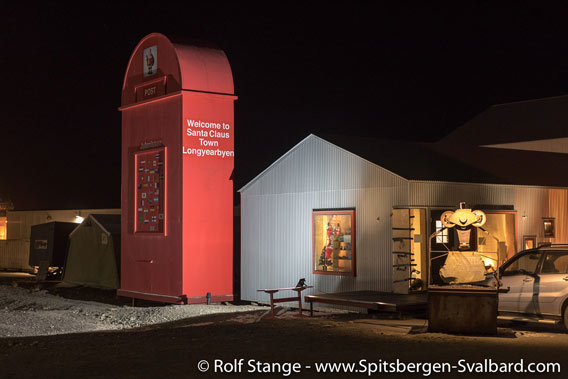
Neither of this happened, until Monday. What happened, was a fight that took a lot of time and energy. Letters, admonitions and warnings were written, bureaucrats and lawyers did what bureaucrats and lawyers do. Neighbours would have to be contacted to give their consent to a renewed permission for the letterbox to remain in place, but is is said that this never happened. Language difficulties seem to have played a role.
Then, the local administration (Longyearbyen Lokalstyre, LL) set a deadline: the letterbox was to disappear on Monday, November 20, 2017. The order to remove it had already been given by LL to a local construction firm. The invoice about the substantial amount of 129,000 NOK (about 13,300 Euro) was in the end to be paid by Po Lin Lee.
Who reacted by ordering a company from the mainland to take the letterbox down in a more carefuly way, so it could be re-built again later somewhere else. Before that happened, Po Lin Lee gave visitors a last chance to visit the letterbox, only to find out that the door had been firmly locked with big screws – without her, the owner, knowing about it. Also, there were traces of forecul break-in on the door, possibly from a local company who had already removed the electrical system on behalf of the local administration.
Gallery – Santa Claus’ Letterbox – 20th November 2017
- gallery anchor link: #gallery_1363
Click on thumbnail to open an enlarged version of the specific photo.
Meanwhile, the discussion in local social media group had gained some momentum. Some were happy that local democracy had won a victory and the letterbox was now about to disappear, while others expressed sadness. There are different opinions regarding the question if Longyearbyen should be presented to the global public as a Santa Claus Town. The local legend actually says that Santa Claus lives in Mine 7b, above Nybyen. During the Christmas period, there is light up there, and there is a letterbox (of more conventional dimensions) next to the road below it, where children can send their letters to Santa Claus as part of the local christmas happenings.
The big Santa Claus letterbox was now removed by a company on behalf of Po Lin Lee. According to her, there are several interested parties that might step in and take over the letterbox to put it up again elsewhere in Scandinavia. And Po Lin Lee has not given up hopes that she might actually be able again to put it up somewhere else in Longyearbyen.
Happy Christmas time to everybody!
More arctic Christmas stories? – Click here to check out my (German) book with historical Christmas stories from high latitudes.
Picture frames made of Spitsbergen-driftwood available for the first time in limited edition
During a walk on any of Spitsbergen’s beautiful beaches, you can’t help it but be amazed about the impressive amounts of driftwood. Not only does it add a aesthetical aspect to the otherwise rather sterile shoreline, but it does also have a fascinating history: Just as Fridtjof Nansen did with his famous ship the Fram, did the wood drift all the way from Siberia with the pack ice across the Arctic Ocean and all the way to the north Atlantic, where it was thrown onto an arctic beach in Svalbard, Greenland, Iceland, Jan Mayen or Frans Josef Land.

Driftwood at Wigdehlpynten – Woodfjord, Spitsbergen
And there we have it. If you are a trapper, you can use it to build a hut (that was rarely done, too much effort) or as firewood (that was very common). I am not a trapper, but a photographer, so it was an obvious idea to use the driftwood to make picture frames. Can you imagine a more appropriate picture frame for arctic pictures than one made of driftwood from Spitsbergen?
Turning driftood into picture frames required more effort than we expected to begin with. We made the first serious attempts several years ago, when master carpenter Wolfgang Zach opened his carpenter’s workshop in Longyearbyen. He called his little company “Alt i 3”, which is a play of words: “3” is “tre” in Norwegian, which also means “tree” or “wood” at the same time. So it translates to “Everything out of wood”. We found also out that you do actually need a license to export driftwood from Spitsbergen, so that was another thing we had to take care of.
So I started collecting driftwood in small amounts. The first project was a bookshelf for our flat in Longyearbyen, and at the same time we started making the first prototypes of picture frames. We just had to find out what works well with this very special material. One of the discoveries that we made was that if you cut and sand it, it looks as fresh and new as a wooden board that you just bought in the building supply store. Which is of course not the idea with picture frames made from arctic driftwood. So I started looking for pieces of wood that had a good shape to start with. Most pieces of driftwood are not natural, but rather trees cut in forestry in Siberia or even ready-made boards. Completely natural driftwood – trees with roots – are actually quite rare.

Rolf Stange transporting driftwood to Longyearbyen.
I took this driftwood in small amounts to Longyearbyen, were it had to be stored and slowly dried over longer periods of time. Then, Wolfgang and I could start making the first picture frames in his carpenter’s workshop. After some experimenting, we had a prototype that we both liked, so the master carpenter could start to produce the first set of 16 picture frames – all of them were made by Wolfgang Zach in Longyearbyen.

Now, these had to get to Germany. If you know me, then it won’t surprise you to read that they travelled from Spitsbergen to Franeker in the Netherlands on the good sailing ship Antigua and from there via Münster and Dresden to my shipping department in northeastern Germany.
After this long journey from Siberia, down a river, with the ice across the Arctic Ocean to a beach in Spitsbergen, from there to Longyearbyen to Wolfang’s carpenter’s workshop, from there on a sailing ship to Europe. And there they are now, the very first series of 16 picture frames from Spitsbergen driftwood, available for the first time since November 2017.
Every single picture frame is a unique specimen. This has to do with the history of the wood, the natural character of the material, the manual production. So I took photographs of all frames, which you can see on this page (click here), which also has all the technical information (dimensions, price etc.)
Ugledalen – 16th November 2017
Thu
16 Nov
2017
A small valley, not too far from Longyearbyen. But not too close either. Compared to the polar night far away from any artificial light, Longyearbyen is still bright as day – well, almost.
With these 3 images, I try to give a more or less realistic impression of what the polar night actually looks like. I guess that is hardly possible, with a photo on a screen. The photos are still too bright, but when I make them even darker, then you will probably think that I have photographed black squares … when you are out in this landscape for a while, then your eyes are getting used to it to some degree and you can still see a lot! Certainly enough for general orientation.
Gallery – Ugledalen – 16th November 2017
- gallery anchor link: #gallery_1361
Click on thumbnail to open an enlarged version of the specific photo.
Things are different when it is cloudy and windy, with drifting snow. Then: darkness is darkness is darkness.
Polar night – 14th November 2017
Tue
14 Nov
2017
Back in Longyearbyen. Spitsbergen in mid-November may not be your place if you love sunshine. You have to appreciate the polar night to enjoy being here now. The last time the sun made it above the horizon was in late October, but today, November 14, the sun remains at least 4 degrees below the horizon even at noon. That is the beginning of the polar night, officially. There is some twilight around mid-day, so-called „nautical twilight“ for a couple of hours. Not even „civil twilight“, which most people would describe as „not completely dark“, but we don’t even have that anymore. There is not much to be seen of the moon either. It is going up in the middle of the night and down again in the afternoon, but it stays so low that you don’t really recognize that it is actually there.
Still, it is fully possible to have orientation while out on tour mid-day. The stars give some light, so that works well at least when there is snow. There is not much snow, but there is some, at least.
Gallery – Polar night – 14th November 2017
- gallery anchor link: #gallery_1359
Click on thumbnail to open an enlarged version of the specific photo.
These photos give some impressions from a little hike during the „brightest“ hours. They are actually too bright, more so than in reality. No photography anymore without a tripod! It is still fun to be outside, but this is obviously not the time for very long trips out in the nature. You do a walk, and you get your work done in town, you spend time meeting friends …
There is, by the way, an info-page on this website dedicated to the polar night and midnight sun.
New 360° panorama: Ballstad, Lofoten
A new panorama on this site gives a 360 degree view of Ballstad on Vestvågøy, one of the Lofoten islands in north Norway. I shot it freehand and the weather was quite typical November.
Part of the new panorama of Ballstad (Lofoten).
Spitsbergen-calender 2018: the east coast
In February, the Spitsbergen-calendar 2018 takes us to the east coast. In the winter season, this is a popular destination for snowmobile day-trips, enabling relatively many people to see this grand winter scenery. Storfjorden is frozen to fast ice here in Mohnbukta, and some smaller bits and pieces of glacier ice are stuck in the ice. They broke off last summer from the combined glacier fronts of Königsbergbreen/Hayesbreen/Heuglinbreen, of which we can see a small part in the background.
It is quite common that polar bears are roaming through this icy landscape. We will see if we are lucky enough to spot them somewhere later …
The sun is just starting to rise above the horizon in Spitsbergen in mid-February, and the days are still short. It is still too early for longer trips. But the light can be breathtakingly beautiful!

Spitsbergen-Calendar 2018: February. Ice-landscape on the east coast.
Vestvågøy – 08th November 2017
Wed
8 Nov
2017
Today, we explore the large Lofoten island of Vestvågøy. The sun is above the horizon from 8 to 15 hours, but it remains hidden behind a thick cloud cover, so there is not too much light. That does not hamper the beauty of the scenery, actually it fits this rough landscape pretty well. But we limit our hiking activities to a little ascent of a slope next to Ballstad for a great view over the settlement and the coastal landscape (have a look at the 360 degree panorama of Ballstad that I shot on this occasion. Then, we follow a small road to explore the stunning coastline. We also have time for a short visit to the famous viking museum Borg. The museum is quite impressive. There is the 1:1 reconstruction of the huge long house of a viking chief. The museum was opened in 1995, and I happened to be there on the day of the opening. I was impressed back then, and I am still impressed today. The modern exhibition house with cinema and souvenir shop and everything that is part of a museum today did not exist, but the long house was there, and that was and is great fun. You can dress and feel like a viking. But to spend the polar night here, which is several weeks long, without any light source that we found find acceptable, from our 2017 perspective? There are no windows. Glass was as expensive as its weight in gold, and that was too much even for the powerful viking chief of Borg. And it was dark anyway outside during large parts of the winter. So they spent the winter in darkness.
Gallery – Vestvågøy – 08th November 2017
- gallery anchor link: #gallery_1357
Click on thumbnail to open an enlarged version of the specific photo.
Kvalvika – 07th November 2017
Tue
7 Nov
2017
Once again we chose the route southwards, to Flakstadøy and Moskenesøy. The scenery on these southern islands is just too impressive. Even on such a rather grey and not completely dry November day.
The outer side of the Lofoten islands is constantly beaten by weather, wind and waves of the north Atlantic, but it is famous for some beautifull white sand beaches. There is one in Ramber directly next to the road (and just on the other side of the same road, there is a very recommendable café, as we learn later the same day on the way back).
Gallery – Kvalvika – 07th November 2017
- gallery anchor link: #gallery_1338
Click on thumbnail to open an enlarged version of the specific photo.
And there is another, really stunning beach, in a dramatic scenic setting, further south on Moskenesøy, in Kvalvika. There, you have to do something before you can enjoy the beach, it is quite a walk up the mountain and down on the other side. A lovely hike! And in November, you can even have the feeling to be the only person in the world in this amazing place, for a short while, and watch the waves washing up the white sand.
From Ballstad to Å – 06th November 2017
Mon
6 Nov
2017
After a lot of goodbyes and farewells, everybody was going his or her way after leaving from or with Antigua in Bodø. For most, the voyage went southwards. For us, it went northwards. Back to Lofoten. It is actually possible to travel there without a ship 🙂
Ballstad on Vestvågøy was to be our Basecamp for a couple of day to discover Lofoten from another perspective. We want to see a lot of places that are quite easily reached over land, rather than with a ship. We want to take time to let the sub-arctic weather (it continues to be quite sub-arctic, November-style) and the nordic light touch the eye, soul and memory card without any rush. We want to enjoy the rugged Lofoten landscape without a tight schedule. A landscape of steep slopes and alpine peaks rising straight up from the shorelines. I try to imagine what it might have been like here maybe 12000 years ago, during the last ice age. It is a mental journey to northwestern Spitsbergen. That’s how it must have been like here back then! Today, Lofoten is an open air museum of previously glaciated landscapes, like a picture book.
Gallery – From Ballstad to Å – 06th November 2017
- gallery anchor link: #gallery_1334
Click on thumbnail to open an enlarged version of the specific photo.
For a first overview, we travel down to Å, all the way south on Moskenesøy. It is a mental journey not only back to the ice age, but also 22 years back for me, when a stay of several months on these islands gave my own connection to the far north a strong boost. I find it easy to understand why, looking at this landscape today.
Vestfjord & Bodø – 04th November 2017
Sat
4 Nov
2017
The wind had calmed down a bit, but it was still strong enough, coming from the south, so we decided to set sails and course to the west, rather than motoring against wind and waves southwards. So we waved goodbye to Lofoten when we left the pier in Svolvær after breakfast (better to be on the safe side!). The islands gave us a lovely farewell, with some sun, a rainbow above the famous „Lofoten wall“ (of mountains, rising straight up from the sea) and fair winds.
We spent the next couple of hours sailing in good style across Vestfjord, straight towards the mainland, before we reached the skerries at the Norwegian coast. A stunning coastline indeed! It is always great to see new land.
The last afternoon of such a voyage goes always quickly by. There is something to see as long as there is light. The sun is currently going down here close to 3 p.m. The final presentations, the triplogs needs to be finished, some preparations for departure tomorrow. The usual logistics. Still, different this time. It is the last time for this northern season.
A big circle closed when we went alongside in Bodø in the evening. We left from here on May 19 to sail via Lofoten and Bear Island up to Spitsbergen. It was the same place where we left, but it feels like a galaxy away. Back then, it was 24 hours of daylight. We had a long arctic summer ahead of us. Now, the sun is hardly making it above the horizon. And we have got a long arctic summer behind us. So many adventures with all the good crew of the Antigua and all the polar travellers who joined us on the various journeys.
Gallery – Vestfjord & Bodø – 04th November 2017
- gallery anchor link: #gallery_1332
Click on thumbnail to open an enlarged version of the specific photo.
A big „thank you“ to everybody who was part of it for a great time, full of amazing adventures, impressions … you have never seen everything in the Arctic, you keep learning forever. The way there, to have seen and to know everything, is infinite. Yet, we got a good bit further. It is the purpose never really to get there, rather to spend as much time as possible on the way. It would be a shame to have seen it all, you have to have some dreams left … there will alway be plenty of it. The journey will never end.
Those thoughts aside – the spirits were high on this last evening. The last week had not given us any whale sightings or northern lights really worth mentioning, but other than that, actually quite a lot. Many impressions as they are typical for this landscape of coasts and islands in north Norway at this season. Good atmosphere on board. Good to have been part of it!
News-Listing live generated at 2025/May/02 at 21:55:12 Uhr (GMT+1)


